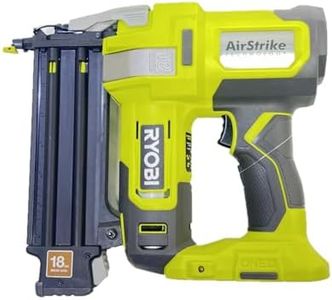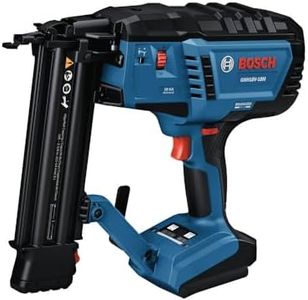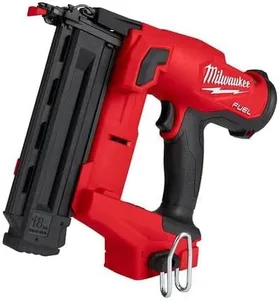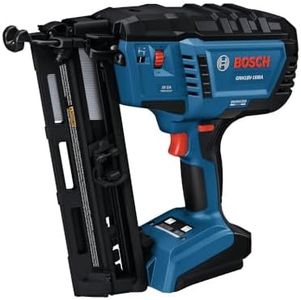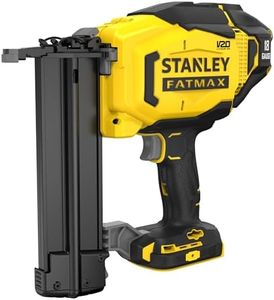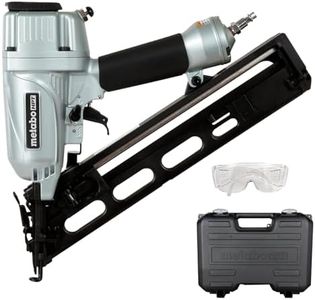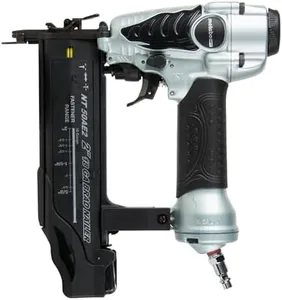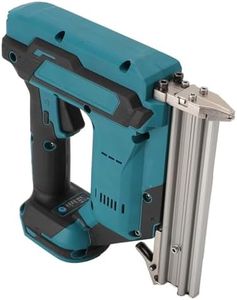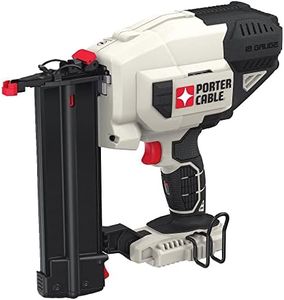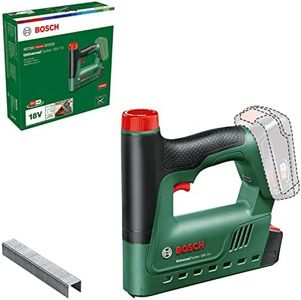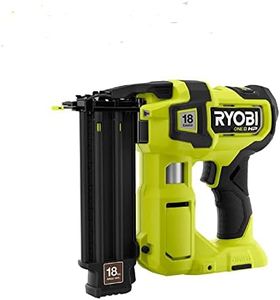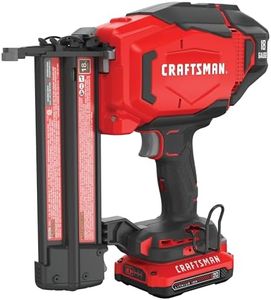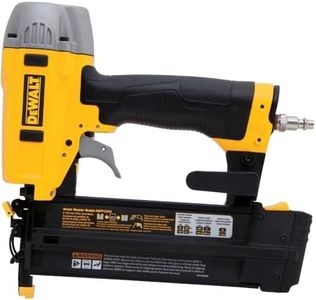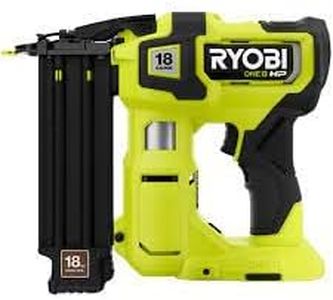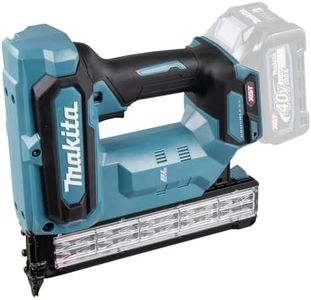We Use CookiesWe use cookies to enhance the security, performance,
functionality and for analytical and promotional activities. By continuing to browse this site you
are agreeing to our privacy policy
10 Best Brad Nailers
From leading brands and best sellers available on the web.Buying Guide for the Best Brad Nailers
Choosing the right brad nailer can make your projects much easier, neater, and more enjoyable, whether you’re working on furniture, trim, or crafts. To find a brad nailer that suits you best, think about how, where, and how often you’ll use it. Knowing which specs matter—and why—will help you pick a tool that's comfortable, efficient, and safe for your projects.Power SourceThe power source of a brad nailer defines how the tool operates. The main choices are pneumatic (air-powered), electric (corded or cordless), or gas-powered. Pneumatic nailers use an air compressor, making them lighter and strong, but they require you to have the compressor and a hose. Electric models don’t need an air source, offering more mobility, but can be heavier, especially cordless ones with batteries. Think about where you’ll use your nailer most; if you’re often far from outlets or compressors, a cordless electric model might be best. If you’ll be working at a bench in your garage with an air compressor, a pneumatic model may suit you better.
Gauge SizeGauge refers to the thickness of the nails the tool uses. A brad nailer typically uses 18-gauge nails, which are thinner and leave smaller holes, making them ideal for delicate trim and light woodworking. Some nailers are designed for 16-gauge or even 23-gauge pins. Thinner nails (higher gauge numbers) are less visible and better for fine work, but less strong, while lower gauge (thicker) nails hold more firmly, better for sturdier material. If you’re mostly working on decorative trim, picture frames, or crafts, stick with the standard 18-gauge. For slightly heavier work, consider a model that can handle a lower gauge, but for most home projects, 18-gauge is perfect.
Nail Length CapacityThis spec tells you the minimum and maximum length of the nails your brad nailer can accept. Longer nails are needed for attaching thicker pieces of material, while shorter nails are good for attaching thin trim. Nailers typically handle lengths from about 5/8-inch to 2 inches. If you plan on working with thin trim or softwoods, a shorter range may be fine. If you anticipate tackling a variety of projects, choose a brad nailer with a wider length range so you have flexibility in material thickness.
Magazine CapacityMagazine capacity refers to how many nails the tool can hold before you need to reload it. Tools with a higher capacity allow you to work longer without stopping but might be a bit heavier or bulkier. If you’re only doing small, occasional jobs, a lower capacity isn’t a big drawback. For larger projects where you'll be firing a lot of nails in sequence, a higher magazine capacity can save time and hassle.
Firing MechanismBrad nailers generally offer either sequential or contact (bump) firing modes. With sequential firing, you must press the tip against the material and then pull the trigger, making it very safe and controlled. Contact firing allows the tool to fire nails when you simply bump it against the surface with the trigger held down, which is faster but riskier for beginners. If you value speed and have experience, dual-mode or contact firing can help on big jobs. If you’re new to nailers or working on precise projects, sequential firing offers more safety and accuracy.
Tool-Free Jam ClearingThis is a feature that lets you clear any jammed nails from the tool without needing extra tools. Jams happen occasionally, and being able to fix them quickly helps you stay productive. If you don’t want to deal with screwdrivers or wrenches, look for models with quick, tool-free jam release. This is especially handy for beginners or frequent users who value convenience.
Adjustable Depth ControlThis lets you control how deeply the nail is driven into the material. Being able to fine-tune this allows you to avoid overdriving (nail goes too deep) or underdriving (nail sticks out), which is crucial for neat and strong results. If you work with a range of materials of different thickness or hardness, adjustable depth is a highly useful feature. For repeated work on a single material, it is less critical but still nice to have for fine-tuning your results.
Size and WeightThe size and weight of a brad nailer determine how comfortable and maneuverable the tool is, especially during longer projects. Lighter, more compact nailers are easier to handle overhead or in tight spots but might need more frequent reloading or have fewer features. If you have a lot of detailed or overhead work, or if hand fatigue is a concern, choose a compact, lightweight model. For occasional, short tasks, a heavier tool shouldn't be a problem.
